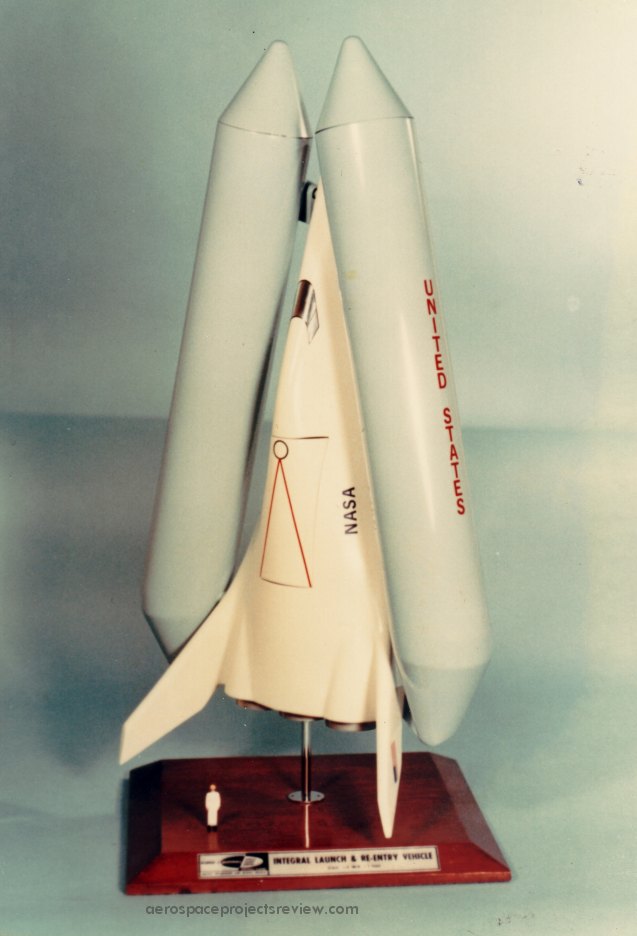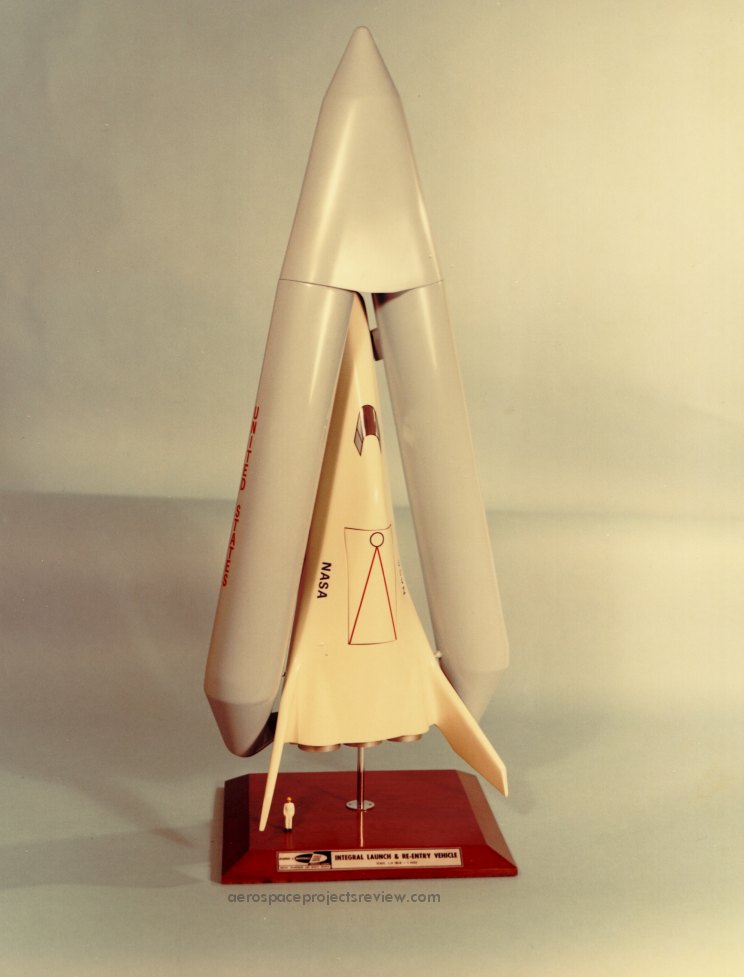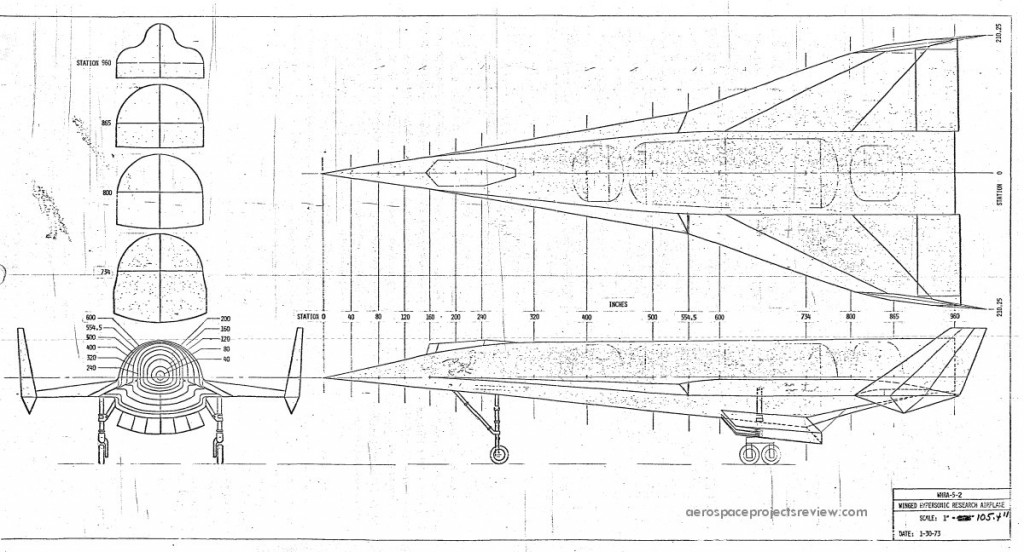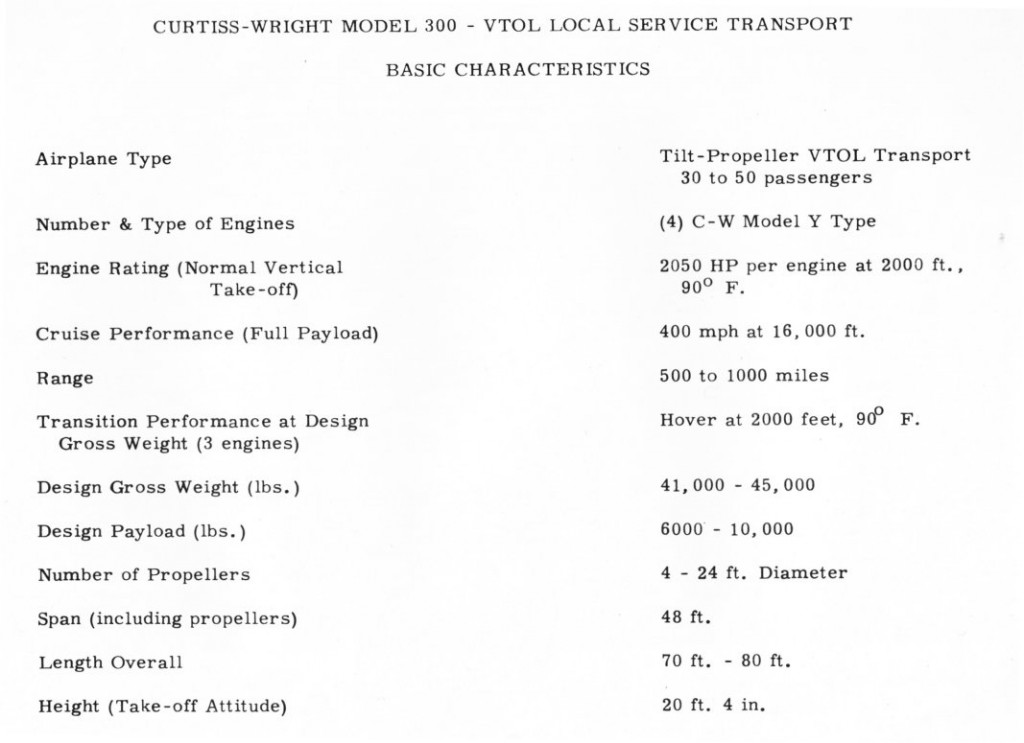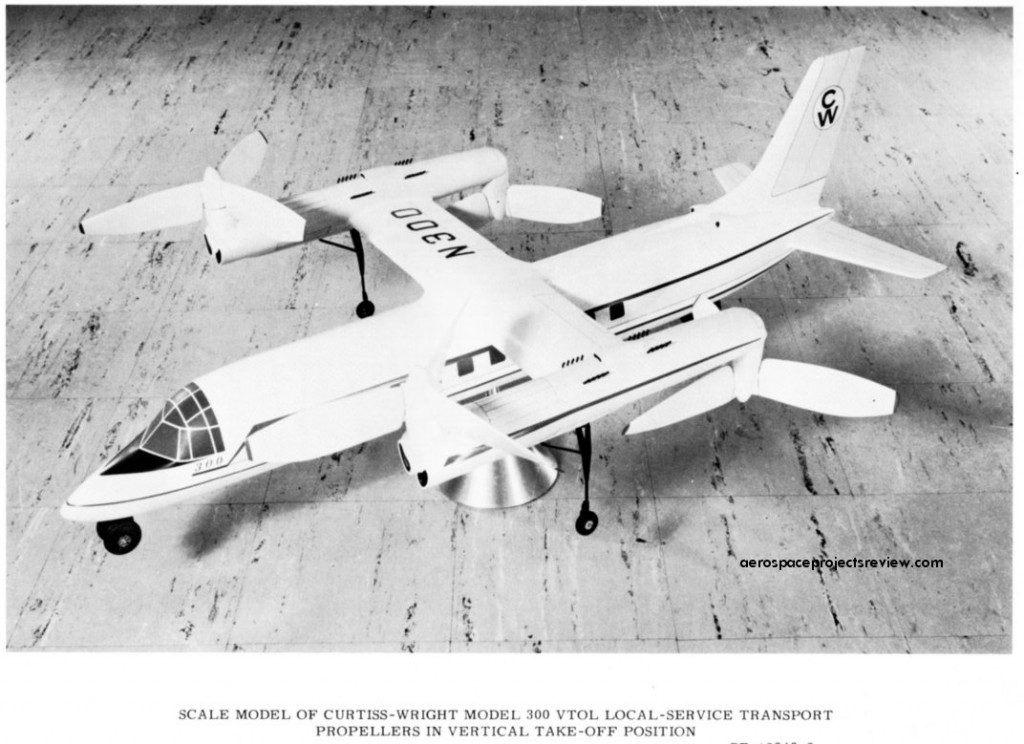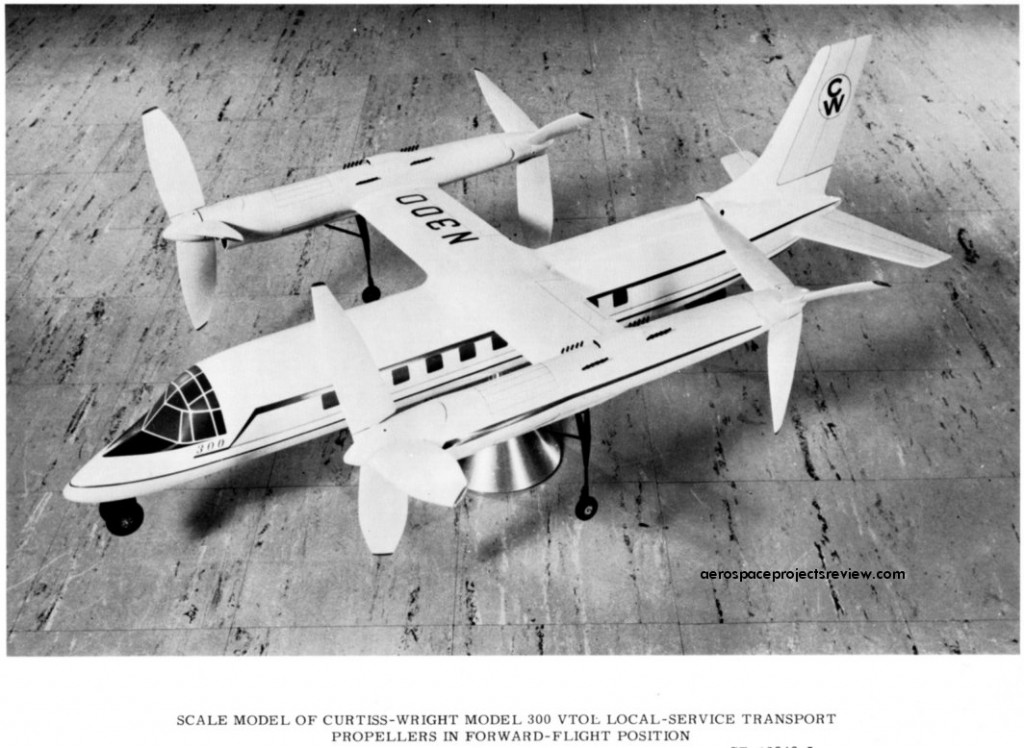Another photo (via the NASA HQ History Office) of the Lockheed STAR Clipper. This was an early stage-and-a-half concept with a reusable orbiter and expendable propellant tanks. Note that this version does not have an aerodynamic fairing over the noses of the the propellant tanks. Vastly more info on this is available in APR issue V3N2.
A photo (via the NASA HQ History Office) of the Lockheed STAR Clipper. This was an early stage-and-a-half concept with a reusable orbiter and expendable propellant tanks. Vastly more info on this is available in APR issue V3N2.
Long before the “Aurora” was flying across the pages of sensationalist magazines at Mach 6+, NASA was studying a range of hypersonic research aircraft. While the designs different, sometimes wildly, there were occasional configurations remarkably like the hypothetical “Aurora.” Some would argue that that means that the “Aurora” was derived from this earlier NASA work, but a more reasonable supposition is that those who envisioned “Aurora” were drawing upon public representations of the earlier NASA work in order to dream up what Aurora must look like.
One such design that is very representative of the iconic “Aurora” image is this Hypersonic Research Airplane configuration from 1973, shown here as a drawing and as a NASA-Langley subsonic wind tunnel test model. The aircraft was powered by liquid rocket engines in the tail and an underslung scramjet pod. It had a cockpit that would raise up at low speed so the pilot could see to land, but was otherwise a very clean configuration.
One of the last aircraft proposed by the Curtis-Wright company (early 1960’s), this version of the Model 300 featured a single main wing with wingtip engine pods. Each pod contained to Wankel rotary internal combustion engines; each engine drove a broad-bladed propeller (one at the front of the pod, one at the rear) of the type that had been successfully demonstrated on the Curtis-Wright X-19 VTOL aircraft. In order to attain vertical lift, the forward propeller would tilt up, the aft propeller would tilt down.
At the time, there was considerable interest in fast short-ranged VTOL transport. The idea was that small VTOL aircraft would operate from various small “ports” in and around major cities, flying to and from the nearest major airport (along with other transportation hubs). The VTOL would provide a bus service for the busy businessman on the go, who might need to leave his office in a hurry and catch the next jetliner to, say, London. While no VTOL aircraft such as the Model 300 were built and put into service for this role, several attempts to fill the “VTOL bus” role were attempted with helicopter, but due to noise and cost the concept never caught on.
The greatly re-tooled 1/72 scale “Whispercraft” from the movie “The 6th Day” has been released by Fantastic Plastic:
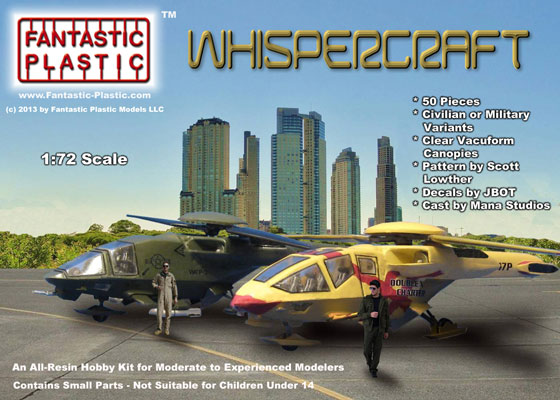
An important upgrade from the original release is that it now comes with a complete cockpit interior as well as an all-new military version cockpit and weapons load.
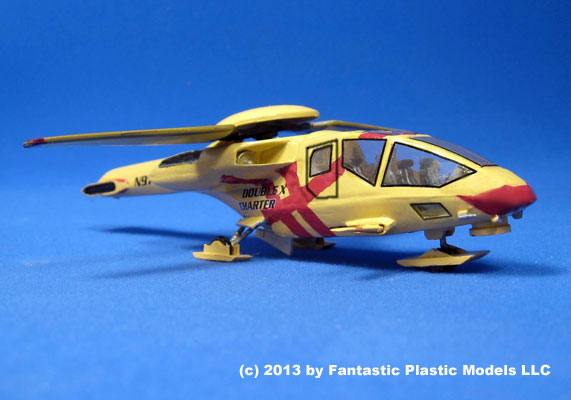
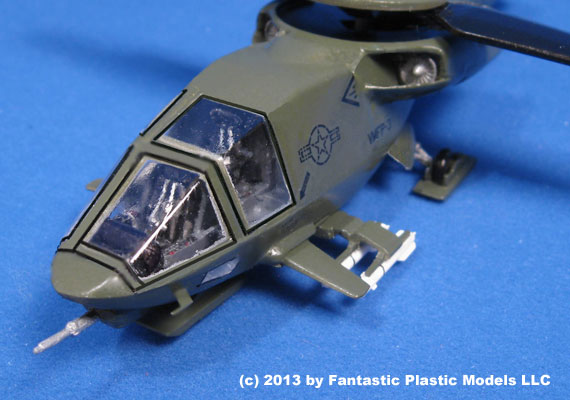
As mentioned HERE, I’m going to do a run of 1/72 Saturn V blueprints. And what would go better with a 1/72 Saturn V blueprint than a 1/72 Saturn V model (well, apart from all the other blueprints I’ll be offering…)?
A snippet of the 1977 TV movie “SST: Death Flight” featuring truly awesome visual effects of an SST equipped with the worst turbojets I’ve ever seen for a supersonic cruise aircraft.
[youtube uEc-6vw3xdM]
